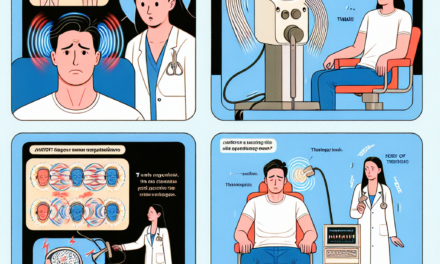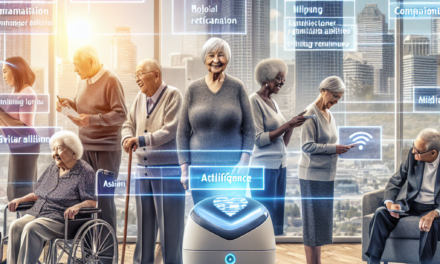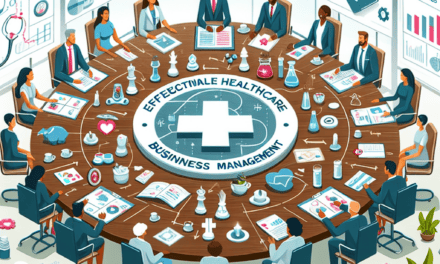KLAS 2025: Celebrating Industry Advancements and Vendor Growth
The healthcare industry is undergoing a transformative phase, driven by technological advancements, regulatory changes, and evolving patient expectations. As we approach 2025, the KLAS Research organization stands at the forefront of this evolution, providing critical insights into vendor performance and industry trends. This article explores the significant advancements in healthcare technology, the growth of vendors, and the implications for healthcare providers and patients alike. We will delve into five key subtopics: the evolution of healthcare technology, the role of data analytics, the impact of telehealth, the importance of interoperability, and the future of vendor partnerships.
The Evolution of Healthcare Technology
Healthcare technology has seen remarkable advancements over the past decade, with innovations that have reshaped patient care, operational efficiency, and data management. As we look towards 2025, several trends are emerging that highlight the evolution of healthcare technology.
- Artificial Intelligence (AI) and Machine Learning: AI and machine learning are revolutionizing diagnostics, treatment planning, and patient monitoring. For instance, AI algorithms can analyze medical images with accuracy comparable to that of human radiologists, significantly speeding up the diagnostic process.
- Wearable Technology: Devices such as smartwatches and fitness trackers are becoming integral to patient health management. These devices not only track vital signs but also provide real-time data to healthcare providers, enabling proactive care.
- Cloud Computing: The shift to cloud-based solutions allows for scalable storage and access to patient data, facilitating collaboration among healthcare providers and improving patient outcomes.
- Blockchain Technology: Blockchain is emerging as a solution for secure patient data sharing, ensuring data integrity and enhancing patient privacy.
- Robotics: Robotics in surgery and rehabilitation is enhancing precision and recovery times, leading to better patient outcomes.
These advancements are not just technological; they are also reshaping the patient experience. For example, AI-driven chatbots are providing 24/7 support for patients, answering queries, and scheduling appointments, which enhances patient engagement and satisfaction.
Moreover, the integration of these technologies is leading to a more personalized approach to healthcare. By leveraging data analytics, providers can tailor treatments to individual patient needs, improving efficacy and reducing costs. As we move towards 2025, the focus will be on further integrating these technologies into everyday healthcare practices, ensuring that they are accessible and beneficial to all patients.
The Role of Data Analytics
Data analytics is a cornerstone of modern healthcare, enabling providers to make informed decisions based on real-time data. As we approach 2025, the role of data analytics is becoming increasingly critical in various aspects of healthcare delivery.
- Predictive Analytics: Predictive analytics uses historical data to forecast future outcomes. For instance, hospitals can predict patient admission rates, allowing for better resource allocation and staffing.
- Population Health Management: By analyzing data from diverse populations, healthcare organizations can identify trends and health disparities, leading to targeted interventions that improve community health.
- Clinical Decision Support: Data analytics tools provide clinicians with evidence-based recommendations at the point of care, enhancing decision-making and improving patient outcomes.
- Operational Efficiency: Analytics can streamline operations by identifying bottlenecks in workflows, reducing wait times, and optimizing resource utilization.
- Patient Engagement: Data analytics can enhance patient engagement by providing insights into patient preferences and behaviors, allowing for more tailored communication and care strategies.
For example, a study conducted by the American Hospital Association found that hospitals using predictive analytics saw a 20% reduction in readmission rates. This not only improves patient outcomes but also reduces costs associated with unnecessary hospital stays.
Furthermore, the integration of data analytics with AI is creating powerful tools for healthcare providers. Machine learning algorithms can analyze vast amounts of data to identify patterns that may not be visible to human analysts. This capability is particularly valuable in areas such as genomics, where understanding complex data can lead to breakthroughs in personalized medicine.
As we look towards 2025, the challenge will be to ensure that healthcare organizations have the necessary infrastructure and expertise to leverage data analytics effectively. This includes investing in training for staff and ensuring that data privacy and security measures are in place to protect sensitive patient information.
The Impact of Telehealth
Telehealth has emerged as a vital component of healthcare delivery, particularly in the wake of the COVID-19 pandemic. As we approach 2025, the impact of telehealth on patient care and vendor growth cannot be overstated.
- Increased Access to Care: Telehealth has made it possible for patients in remote or underserved areas to access healthcare services. This is particularly important for specialties that may not have local providers.
- Cost-Effectiveness: Telehealth can reduce costs for both patients and providers by minimizing the need for in-person visits and associated expenses such as travel and time off work.
- Patient Satisfaction: Studies have shown that patients are generally satisfied with telehealth services, citing convenience and reduced wait times as significant benefits.
- Integration with EHRs: Many telehealth platforms are now integrating with electronic health records (EHRs), allowing for seamless documentation and continuity of care.
- Regulatory Changes: The pandemic has prompted regulatory changes that have expanded telehealth services, and many of these changes are likely to remain in place post-pandemic.
For instance, a report from McKinsey & Company indicated that telehealth usage stabilized at levels 38 times higher than before the pandemic. This shift has prompted healthcare organizations to invest in telehealth technologies and training for staff, leading to significant vendor growth in this sector.
Moreover, telehealth is not limited to primary care; it is expanding into specialties such as mental health, dermatology, and chronic disease management. This diversification is creating new opportunities for vendors to develop specialized telehealth solutions that cater to various patient needs.
As we move towards 2025, the challenge will be to ensure that telehealth services are equitable and accessible to all patients. This includes addressing issues such as digital literacy, internet access, and reimbursement policies that may hinder the adoption of telehealth services.
The Importance of Interoperability
Interoperability—the ability of different healthcare systems and applications to communicate and exchange data—is crucial for improving patient care and operational efficiency. As we approach 2025, the importance of interoperability is becoming increasingly evident.
- Improved Care Coordination: Interoperability allows for seamless sharing of patient information among providers, leading to better care coordination and reduced duplication of services.
- Enhanced Patient Safety: Access to complete patient records can prevent medication errors and adverse events, improving overall patient safety.
- Data-Driven Insights: Interoperable systems enable healthcare organizations to aggregate data from multiple sources, leading to more comprehensive insights into patient populations and treatment outcomes.
- Regulatory Compliance: As regulations around data sharing become more stringent, interoperability will be essential for compliance with laws such as the 21st Century Cures Act.
- Vendor Collaboration: Interoperability fosters collaboration among vendors, leading to the development of integrated solutions that enhance the overall healthcare ecosystem.
For example, the Office of the National Coordinator for Health Information Technology (ONC) has set ambitious goals for interoperability, aiming to create a health information exchange that allows for the seamless flow of data across the healthcare continuum. This initiative is expected to drive innovation among vendors as they develop solutions that meet these interoperability standards.
Moreover, organizations that prioritize interoperability are likely to see improved patient outcomes and operational efficiencies. A study by the Healthcare Information and Management Systems Society (HIMSS) found that organizations with high levels of interoperability reported a 20% increase in patient satisfaction and a 15% reduction in operational costs.
As we look towards 2025, the challenge will be to overcome the technical and cultural barriers that have historically hindered interoperability. This includes addressing issues such as data standardization, privacy concerns, and the need for a collaborative approach among stakeholders.
The Future of Vendor Partnerships
As the healthcare landscape continues to evolve, the nature of vendor partnerships is also changing. As we approach 2025, organizations are recognizing the importance of strategic partnerships in driving innovation and improving patient care.
- Collaborative Innovation: Vendors are increasingly collaborating with healthcare organizations to co-develop solutions that address specific challenges faced by providers and patients.
- Value-Based Care: Partnerships that focus on value-based care models are becoming more prevalent, as organizations seek to improve outcomes while controlling costs.
- Shared Risk Models: Some vendors are exploring shared risk models, where they take on some of the financial risk associated with implementing their solutions, aligning their incentives with those of healthcare providers.
- Focus on Patient-Centric Solutions: Vendors are prioritizing the development of patient-centric solutions that enhance the patient experience and improve engagement.
- Long-Term Relationships: Organizations are moving away from transactional relationships with vendors towards long-term partnerships that foster collaboration and mutual growth.
For instance, a partnership between a major EHR vendor and a healthcare system resulted in the development of a customized solution that improved care coordination for patients with chronic diseases. This collaboration not only enhanced patient outcomes but also strengthened the relationship between the vendor and the healthcare organization.
Moreover, as healthcare organizations increasingly adopt digital health solutions, the demand for vendors that can provide comprehensive support and integration services is growing. This trend is prompting vendors to invest in customer success teams that focus on ensuring that healthcare organizations derive maximum value from their solutions.
As we move towards 2025, the challenge will be to navigate the complexities of these partnerships while ensuring that they remain focused on improving patient care and outcomes. This requires a commitment to transparency, communication, and shared goals among all stakeholders.
Conclusion
As we celebrate the advancements in healthcare technology and the growth of vendors leading up to 2025, it is clear that the industry is on the cusp of significant transformation. The evolution of healthcare technology, the role of data analytics, the impact of telehealth, the importance of interoperability, and the future of vendor partnerships are all critical components of this journey.
Healthcare organizations must embrace these changes and invest in the necessary infrastructure, training, and partnerships to leverage the full potential of these advancements. By doing so, they can improve patient care, enhance operational efficiency, and ultimately contribute to a healthier society.
As we look towards the future, it is essential for all stakeholders—providers, vendors, policymakers, and patients—to work collaboratively to ensure that the advancements in healthcare technology benefit everyone. The journey towards 2025 is not just about celebrating achievements; it is about building a sustainable and equitable healthcare system for all.





